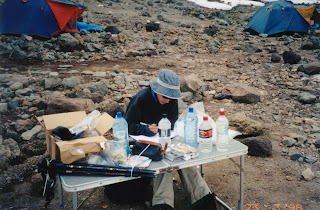 |
| Quote from my story in Dreamers and Doers (the photo's me on top of Half Dome after climbing the Regular NW last May). |
Some said I was too young. But I think the fact that I was
just twelve years old when I went to Tanzania and climbed Kilimanjaro with my dad meant that I still had that fleeting openness to life that comes from having a mind that is not yet fully formed. The scenes and experiences I took in over
the course of that trip shaped me in a way that still persists today.
I wrote a bit about what climbing Kilimanjaro meant to me in my story,
“Discovering a Certain Grandness of Life,” for Dreamers and Doers. This is a collection of stories, published by the Ladies Trekking Club, by women from
across the world whose lives have in some way been shaped by the fact they climbed to the top of Africa; it is an anthology that is edifying, enlightening, and inspiring.
But it’s not actually necessary to travel halfway around the
world in order to learn most of the personal lessons that we wrote about. Many of the benefits of travel and adventure can come from
simply opening and reading a book. This is the gift this project aims to give to many
children who have grown up living in the shadows of Kilimanjaro: every copy of Dreamers and Doers sold provides for a
textbook that will be donated to a Tanzanian school.
Take part in these ladies’ adventures and give the gift of
education by ordering a copy of Dreamers and Doers here.
 |
| Me in 2001, trying to keep up with pre-alegbra homework at a camp on Kilimanjaro |







